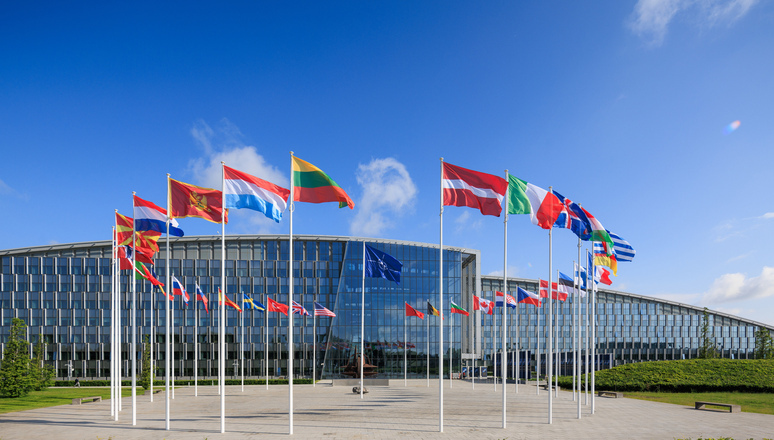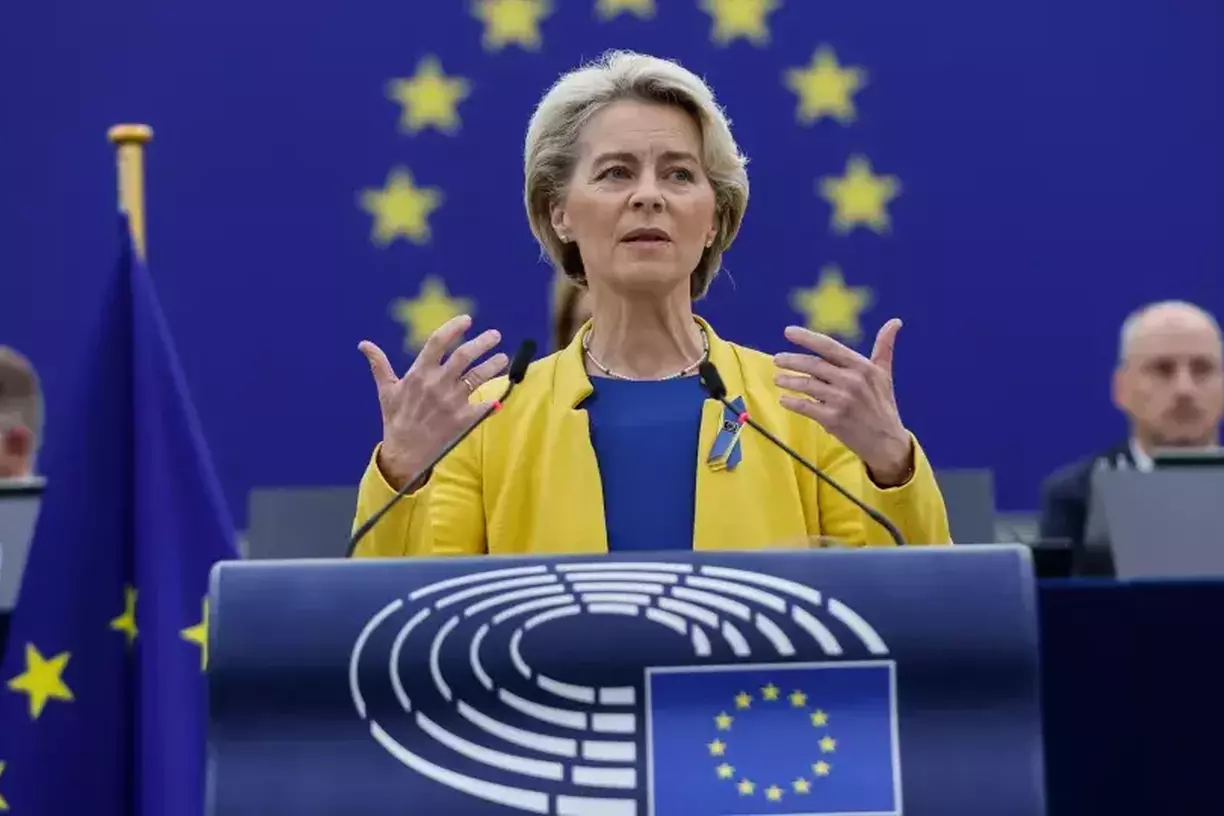June 30, 2025
The new NATO spending target will hamper Europe’s innovation policy

NATO member states have committed to raising defence and security-related spending from 2 to 5 percent of GDP by 2035. Yet as AlgoSoc member Koen Frenken argues, the proposed spending is unlikely to help create a more autonomous, competitive and sustainable Europe.
“A broader concept of security is needed to ensure the enormous increase in defence spending is consistent with European values and capable of meaningfully improving the strategic autonomy of the EU, the economic prosperity of its inhabitants and the sustainability of our planet”
During the recent NATO summit in The Hague, member states agreed to a gradual increase in defence spending from 2 to 5 percent of their GDP by 2035. This percentage is further divided into 3.5 percent for classic defence expenditure and 1.5 percent for supporting expenditures such as funding critical infrastructures. The agreement means that most member states will have to increase their defence expenditure enormously and in a short period of time.
A significant portion of the higher defence expenditures will translate into higher investments in Research & Development (R&D), as approximately 20 percent of defence translates into R&D. If we make the same assumption for future spending on critical infrastructure, then the new NATO standard means an increase in the EU’s annual R&D expenditure from 2.3 percent of GDP in 2024 to 2.9 percent of GDP in 2035. This would mean an increase in R&D spending of roughly 100 billion (!) euros annually, as part of national defence policies rather than EU innovation policy.
That is an unprecedented, structural boost for innovation. According to the Draghi report released last year, this impulse should be welcomed. In the report, military R&D is highlighted as one of the main drivers of Europe’s future development. According to Draghi’s reasoning, higher R&D investments in the EU would greatly contribute to the three goals of innovation policy: more strategic autonomy, more competitiveness and more sustainability. However, serious doubts exist about whether each of these policy objectives will be achieved.
“Higher defence spending could further increase the economic and political power differentials between large and small EU countries, resulting in a lower ability for joint action”
No more autonomous
The new NATO standard was prompted by increasing threats, particularly from Russia, that affect the security of citizens, companies and infrastructures. In that light, a strong investment boost is needed to guarantee security.
However, where security will increase, more military R&D will not necessarily lead to a strategically more autonomous Europe. Individual countries will increase their technological capacity, but without better European integration of military technology, procurement markets and infrastructures, the EU as a whole will not be able to operate more autonomously.
In fact, higher defence spending could further increase the economic and political power differentials between large and small EU countries, resulting in a lower ability for joint action. In addition, it is expected that the EU will have to rely on superior American intelligence and infrastructures for the deployment of military technology for years to come. Now that American politics has proven to be unpredictable and unreliable, this strong interconnectedness is as much an additional security risk as it is a military strength.
No more competitive
The new NATO target will surely strengthen the competitiveness of the American economy, while that of Europe may further lag behind. The United States is a leader in military technology, both in terms of quality and price, which explains why a large share of EU defence spending will continue to be reflected in the American economy.
When investing in digital infrastructures, European governments will likely continue to choose American companies, at least in the short term, despite the structural violations of European regulations by “Big Tech”. In addition, due to the increased investments in military R&D, governments may look for budget cuts for civilian R&D.
There is a further danger of crowding out, when military companies and defence poach talent from civilian sectors and military spending drives out other investments. Ironically, the NATO standard might lead to more fragmentation and less integration of the European market if countries favour their own industries in tendering processes and R&D subsidies.
“Additional defence expenditure locks in the use of fossil fuels”
And certainly no more sustainable
Finally, if we look at the consequences of the increased defence spending for the ambitious environmental goals of the European Union, there is even more reason for scepticism. Proponents of the new high NATO standard have presented it as a win-win scenario for security policy and sustainability policy.
By investing even more in clean technology such as wind and solar power, member states will establish energy independence from countries outside the EU more quickly. Moreover, investments and standards for a circular economy will also ensure a lower import dependency on (critical) raw materials and a reduction in pollution and greenhouse gases.
What remains overlooked in the discussion, however, is that the defence apparatus is mainly dependent on fossil fuel energy and infrastructure. The additional defence expenditure therefore locks in the use of fossil fuels. And when weapons are actually deployed, the consequences are often disastrous for citizens and for the environment.
A technology push that doesn’t deliver
The European Union is facing an almost existential challenge. Its diplomatic role in the global governance of human rights, trade and environmental policy is now being substituted for a more robust NATO pact. However, this new military focus could conflict with the objectives of innovation policy and further increase tensions within the Union.
The age-old strategy of pursuing a “technology push”, which is central to the Draghi report, does not automatically work with a sudden increase in military spending. If no additional conditions can be imposed on this military spending, it is far from clear that it will lead to more autonomy, competitiveness and sustainability. Indeed, the opposite might be achieved.
A broader concept of security is needed in which the strategic (digital) autonomy of the EU, diplomatic relations outside NATO and the sustainability of the planet are central. This new conceptualisation offers an explicit framework to articulate additional conditions required for defence spending.
Conditions might include local content requirements, circularity, sustainable energy, digital regulations and human rights, to name a few. Such a framework is necessary to ensure the enormous increase in defence spending is consistent with European values and capable of meaningfully improving the strategic autonomy of the EU, the economic prosperity of its inhabitants and the sustainability of our planet.
More results /
By Roel Dobbe • November 12, 2025
By Natali Helberger • José van Dijck • Claes de Vreese • October 27, 2025
By Natali Helberger • March 06, 2025
By Kätliin Lember • November 07, 2024
By Maurits Kaptein • June 06, 2025
By Leonie Westerbeek • November 22, 2024
 What data reveals about Meta and Google’s political ad ban in the EU
What data reveals about Meta and Google’s political ad ban in the EU
By Fabio Votta • November 05, 2025
By Ernesto de León • Fabio Votta • Theo Araujo • Claes de Vreese • October 28, 2025
By Charis Papaevangelou • Fabio Votta • September 22, 2025







